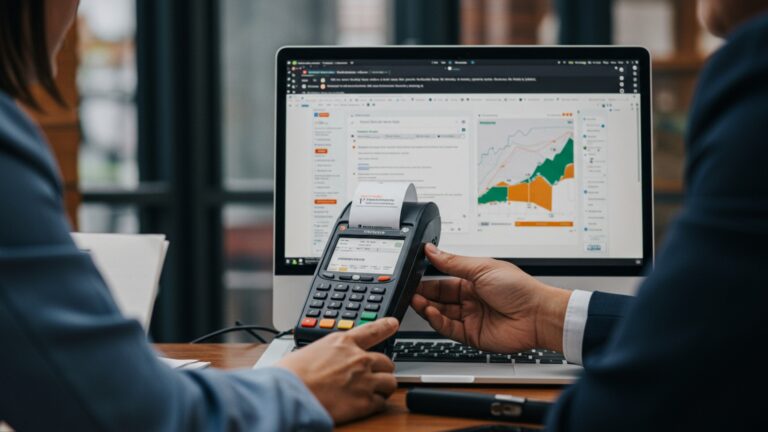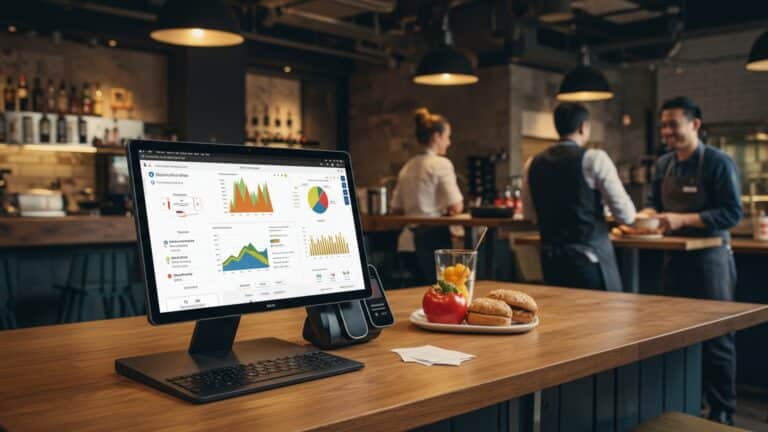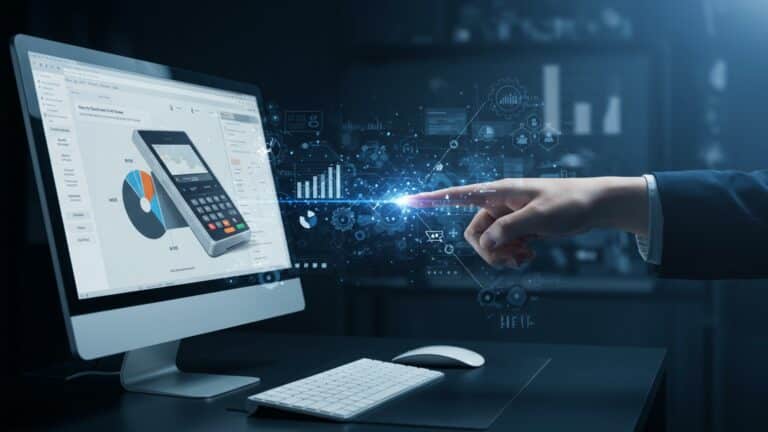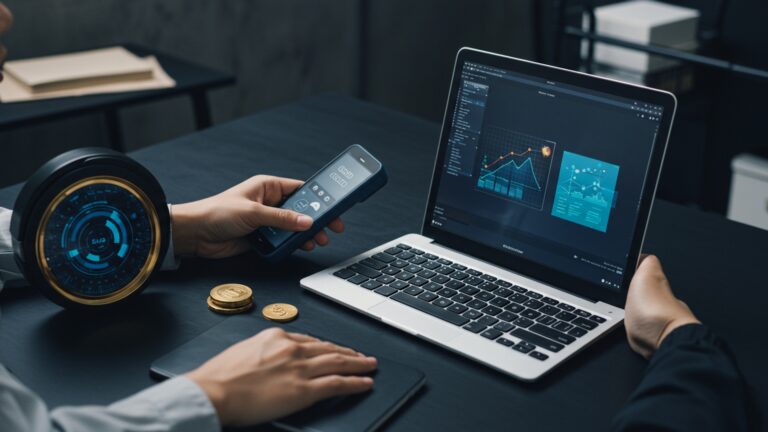How to Choose the Right POS Software for Your Retail Business Guide
The retail landscape is evolving at warp speed, making the selection of the right pos software for retail a pivotal strategic decision, not just an operational one. Gone are the days of basic cash registers; today’s retailers demand robust systems that seamlessly integrate inventory management, customer relationship tools. advanced analytics, all while supporting omnichannel operations. Consider the recent surge in demand for mobile POS solutions in pop-up shops or AI-driven insights helping fashion boutiques optimize stock. A misstep here can cripple efficiency and customer experience, whereas a shrewd choice empowers growth, streamlines operations from checkout to back-office. offers a competitive edge in today’s dynamic market.
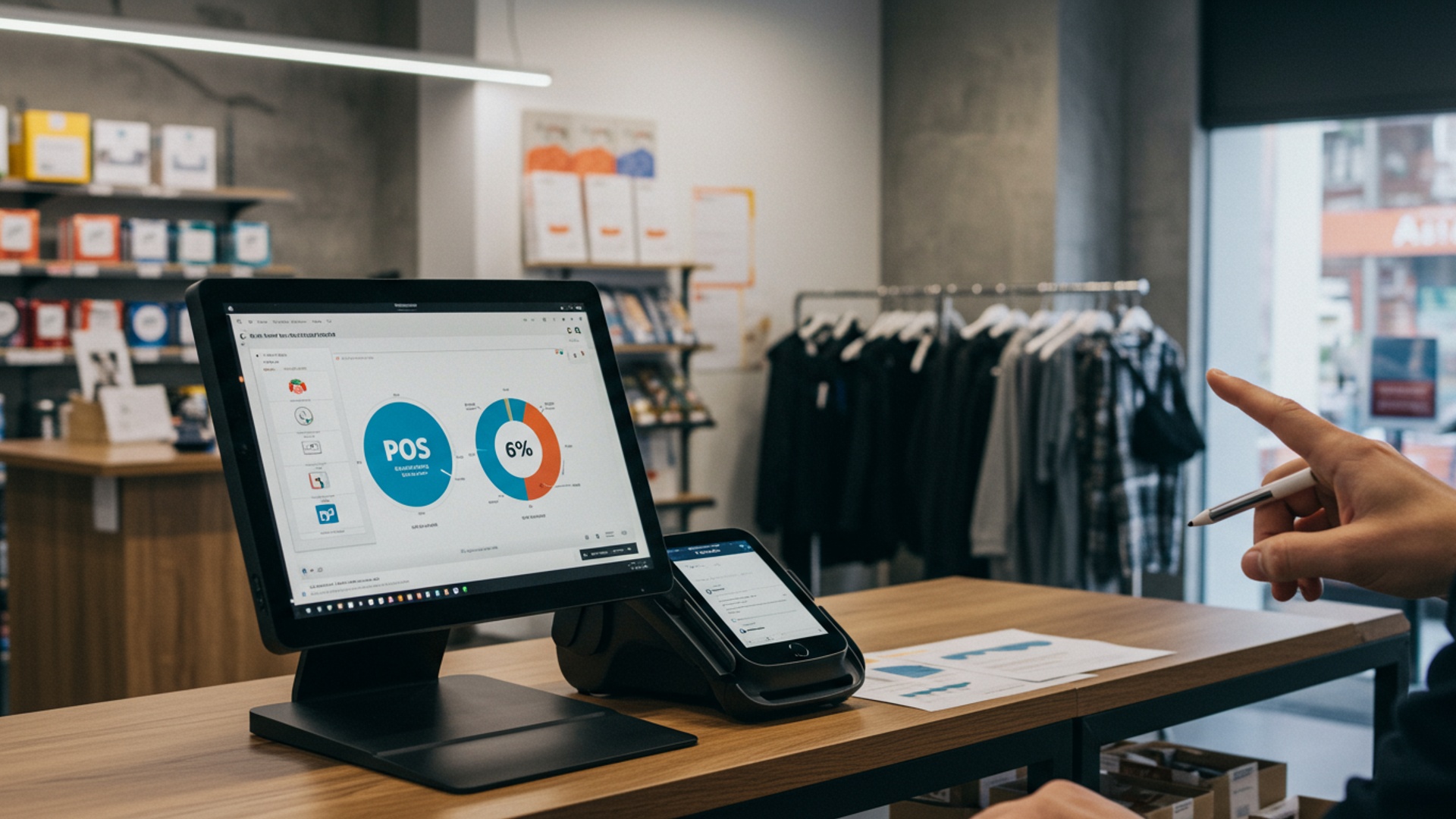
Understanding POS Software for Retail: More Than Just a Cash Register
In today’s competitive retail landscape, the days of a simple cash register are long gone. A Point of Sale (POS) system is the central nervous system of any modern retail operation, going far beyond processing transactions. When we talk about pos software for retail, we’re referring to a comprehensive suite of tools designed to manage sales, inventory, customer relationships. much more.
At its core, POS software facilitates the exchange of goods and services for payment. But, advanced systems also handle:
- Inventory Management
- Customer Relationship Management (CRM)
- Sales Reporting and Analytics
- Employee Management
- Payment Processing
Tracking stock levels, receiving new shipments, managing returns. even optimizing reorder points.
Building customer profiles, tracking purchase history, managing loyalty programs. personalizing marketing efforts.
Providing insights into sales trends, peak hours, best-selling products. employee performance.
Scheduling, time tracking, commission calculations. access control.
Integrating with various payment methods, including credit/debit cards, mobile payments. gift cards.
Choosing the right pos software for retail is a critical decision that can significantly impact your efficiency, profitability. customer satisfaction. It’s an investment in your business’s operational backbone.
Key Features to Look For in POS Software for Retail
The ideal pos software for retail will offer a robust set of features tailored to your specific business needs. Here are the essential functionalities to prioritize:
- Inventory Management
- Real-time stock tracking across multiple locations.
- Automatic reorder alerts and purchase order generation.
- Barcode scanning for quick product lookup and checkout.
- Support for product variations (size, color, style).
- Physical inventory counts and adjustments.
- Sales & Transaction Processing
- Intuitive and fast checkout interface.
- Ability to handle various payment types (cash, credit/debit, mobile, gift cards).
- Refunds, returns. exchanges management.
- Discounts, promotions. loyalty program integration.
- Layaway or deferred payment options (if applicable).
- Customer Relationship Management (CRM)
- Customer database with purchase history.
- Loyalty program creation and management.
- Ability to capture customer contact insights for marketing.
- Personalized recommendations based on past purchases.
- Reporting & Analytics
- Comprehensive sales reports (daily, weekly, monthly, by product, by employee).
- Inventory reports (stock levels, turnover rates, dead stock).
- Customer purchase behavior analysis.
- Employee performance metrics.
- Customizable dashboard for key performance indicators (KPIs).
- Employee Management
- Time clock functionality for staff.
- User permissions and access levels.
- Sales performance tracking for individual employees.
- Multi-Store Capabilities (if applicable)
- Centralized management of inventory, pricing. customer data across all locations.
- Consolidated reporting for the entire business.
Actionable Takeaway: For a clothing boutique, accurate inventory is paramount to prevent overselling popular sizes or colors. A good system will notify you when stock is low, allowing you to reorder before a customer is disappointed.
Real-world Example: A busy coffee shop needs a lightning-fast checkout process to keep queues moving. The ability to quickly apply loyalty points or accept a mobile payment directly from the POS is crucial for customer flow.
Expert Insight: According to Forbes, retaining existing customers is significantly cheaper than acquiring new ones. A strong CRM within your pos software for retail helps foster loyalty and repeat business.
Actionable Takeaway: Regularly review your “best-seller” reports to inform your purchasing decisions. If a particular product consistently underperforms, consider discontinuing it or running a targeted promotion.
Deployment Models: Cloud vs. On-Premise POS Software for Retail
When selecting pos software for retail, one of the fundamental decisions is how the software will be hosted and accessed. There are two primary deployment models, each with distinct advantages and disadvantages:
| Feature | Cloud-Based (SaaS) POS | On-Premise POS |
|---|---|---|
| Hosting | Software and data hosted on the vendor’s servers. Accessed via internet browser or app. | Software and data installed directly on your own hardware (servers, computers) in your store. |
| Cost Structure | Subscription-based (monthly/annual fees). Lower upfront cost. | One-time license purchase. Higher upfront cost, ongoing maintenance costs. |
| Accessibility | Access from anywhere with internet access (store, home, mobile). | Primarily accessible only from the store’s network. Remote access might require complex VPN setup. |
| Maintenance & Updates | Managed by the vendor. Automatic updates, security patches. | Your responsibility or requires IT staff/contractor. Manual updates. |
| Data Security | Vendor is responsible for security, often with robust enterprise-grade measures. | Your responsibility. Requires dedicated IT security measures. |
| Scalability | Easily scales up or down with subscription tiers. | Limited by your hardware capacity. Upgrades require new hardware investment. |
| Internet Dependency | Requires a stable internet connection for full functionality (though some offer offline modes). | Less dependent on internet for core operations. updates and external integrations may need it. |
| Control & Customization | Less direct control over server environment. Customization might be limited to what the vendor offers. | Full control over your server environment and potential for deeper customization. |
Choosing the Right Model: For most small to medium-sized retail businesses, cloud-based pos software for retail is often the more attractive option due to its lower upfront costs, ease of use, automatic updates. remote accessibility. Larger enterprises with specific security compliance or deeply customized needs might still opt for on-premise solutions. they require significant IT resources.
Integration Capabilities: Connecting Your Retail Ecosystem
No business operates in a vacuum. Your pos software for retail should not only manage your sales but also seamlessly connect with other crucial business tools. Robust integration capabilities are vital for streamlining operations and preventing data silos.
Consider integrations with:
- E-commerce Platforms
- Accounting Software
- Payment Processors
- Marketing Automation Tools
- Third-Party Apps
If you sell online (e. g. , Shopify, WooCommerce), your POS should sync inventory, sales data. customer data between your physical and online stores. This ensures accurate stock levels and a unified customer experience.
Case Study: “Boutique Threads,” a small fashion retailer, integrated their in-store POS with their Shopify website. Now, when a customer buys a dress online, the in-store inventory automatically updates. vice-versa. This eliminated overselling and improved customer satisfaction.
Integrating with platforms like QuickBooks, Xero, or Sage automates the transfer of sales data, expenses. payroll insights, significantly reducing manual data entry and errors.
While many POS systems have built-in payment processing, ensure it supports your preferred processor or offers competitive rates. EMV compliance and contactless payment options (NFC) are essential.
Connecting with email marketing platforms (e. g. , Mailchimp) or CRM tools allows you to segment customers based on purchase history and send targeted promotions.
Some POS systems offer an app marketplace for specialized functionalities like advanced loyalty programs, appointment scheduling, or shipping solutions.
Before committing, ask potential vendors about their API (Application Programming Interface) capabilities and a list of their pre-built integrations. A flexible system that can “talk” to your other essential tools will save you countless hours and improve data accuracy.
Scalability and Future-Proofing Your Investment
Your retail business is likely to evolve. your pos software for retail should be able to grow with it. Investing in a system that lacks scalability can lead to costly migrations down the line.
- Growth in Sales Volume
- Adding More Locations
- Expanding Product Lines
- New Features and Technology
- Hardware Compatibility
Can the system handle increased transaction loads without slowing down? Cloud-based systems are generally more adept at this, as server resources can be scaled on demand.
If you plan to open additional stores, will the POS support multi-store management seamlessly? This includes centralized inventory, pricing. reporting.
Does the inventory management system accommodate a growing number of SKUs and diverse product types?
How often does the vendor release updates and new features? Is the system regularly updated to incorporate the latest payment technologies (e. g. , new mobile payment methods) or retail trends?
Ensure the software is compatible with a range of hardware (barcode scanners, receipt printers, card readers) and isn’t tied to proprietary, expensive hardware that limits your options.
Look for vendors with a clear product roadmap and a history of innovation. A system that offers regular, automatic updates (especially for cloud POS) ensures you’re always using the latest and most secure version without additional effort.
Cost Considerations: Beyond the Sticker Price
The cost of pos software for retail isn’t just the initial purchase price or monthly subscription. A truly comprehensive cost analysis includes several factors:
- Software Fees
- Subscription (Cloud)
- License (On-Premise)
- Hardware Costs
- Payment Processing Fees
- Implementation and Setup Fees
- Training Costs
- Support Fees
- Integration Costs
- Hidden Costs
Monthly or annual fees, often tiered based on features, number of users, or locations.
One-time purchase. consider future upgrade costs.
POS terminals, receipt printers, barcode scanners, cash drawers, card readers. These can be purchased outright or sometimes leased.
This is a significant ongoing cost. interpret the percentage per transaction, interchange fees. any monthly minimums or gateway fees. Compare different processors.
Some vendors charge for initial setup, data migration. configuration.
While some basic training may be included, extensive or ongoing training for new staff might incur additional fees.
Beyond basic support, premium support tiers with faster response times or dedicated account managers might cost extra.
While some integrations are free, others (especially custom ones) might have associated development or setup fees.
Be wary of contracts that lock you into specific payment processors or charge for essential features that should be standard. Always read the fine print.
Actionable Takeaway: Get a detailed quote that breaks down all potential costs for at least the first two to three years. Calculate your total cost of ownership (TCO) and compare it across different vendors. A slightly higher monthly fee might be justified if it includes premium support, all necessary hardware. robust features that save you money elsewhere.
Vendor Support and Training: Your Lifeline
Even the most intuitive pos software for retail can present challenges. Reliable vendor support and comprehensive training are crucial for smooth operations, especially during critical times like peak shopping seasons.
- Availability of Support
- Quality of Support
- Training Resources
- Community and Forums
- Account Management
What are the support hours? Is it 24/7, or limited to business hours? What channels are available (phone, email, chat, knowledge base)?
Is the support team knowledgeable and responsive? Look for vendors with strong customer reviews regarding their support.
Does the vendor provide comprehensive training materials (video tutorials, user manuals, webinars)? Is initial onboarding assistance included?
A vibrant user community can be an invaluable resource for tips, tricks. troubleshooting.
For larger businesses, a dedicated account manager can provide personalized assistance and strategic guidance.
Personal Anecdote: “When I first launched my bookstore, I thought I could figure out the POS on my own. But when my barcode scanner stopped working on Black Friday, having a responsive support team available via chat was a lifesaver. It quickly resolved the issue, preventing lost sales and frustrated customers.” – Sarah, Owner of ‘Page Turners’ Bookstore.
Making Your Decision: A Step-by-Step Approach
Choosing the right pos software for retail is a process that requires careful consideration. Follow these steps to make an informed decision:
- Assess Your Needs
- What kind of retail business do you operate (boutique, grocery, restaurant, multi-store)?
- What are your current pain points that a POS needs to solve?
- What are your must-have features vs. nice-to-have features?
- What is your budget for software, hardware. ongoing fees?
- Do you need integrations with specific existing software (e-commerce, accounting)?
- Research and Shortlist Vendors
- Based on your needs, research reputable POS providers. Look at industry-specific solutions if your retail niche is specialized.
- Read reviews from other retailers in your industry (e. g. , on Capterra, G2, Software Advice).
- Aim for a shortlist of 3-5 vendors.
- Request Demos and Free Trials
- Schedule personalized demos with each shortlisted vendor. Be prepared with a list of specific questions related to your business needs.
- Take advantage of free trials to test the software in a real-world (or simulated) environment. Involve your staff in the testing process.
- Check References and Case Studies
- Ask vendors for references from similar businesses or review their published case studies.
- Reach out to other retailers using the software to get their honest feedback.
- Review Contracts and Pricing
- Get detailed, written quotes for all components (software, hardware, processing, support).
- grasp contract lengths, cancellation policies. any potential hidden fees.
- Negotiate if possible, especially on processing rates.
- Plan for Implementation
- Once you’ve made your choice, work with the vendor to develop an implementation plan.
- This includes data migration, hardware setup, staff training. a go-live date.
- Ensure you have a designated point person for the implementation process.
Conclusion
Choosing your retail POS isn’t merely a software purchase; it’s a strategic investment that dictates your operational efficiency and customer experience. As we’ve explored, the right system acts as the backbone for everything from inventory management to seamless checkout, even influencing your ability to adapt to current trends like omnichannel retail and personalized marketing. My personal tip is to always conduct a live demo with your core team, focusing on how a system like one with robust e-commerce integration, a recent development, handles real-world scenarios specific to your business, such as processing a return or managing a flash sale. This hands-on approach ensures you’re selecting a solution that genuinely empowers your staff and delights your customers, rather than just meeting a checklist. Move forward with confidence, knowing that your diligence today will unlock significant growth for your retail venture tomorrow.
More Articles
How to Select the Best POS Software in India A Comprehensive Guide
Master Choosing the Best POS Software in India for Your Business Needs
How to Choose and Implement Cloud Based POS Software for Your Business
Learn How to Master POS Billing Software for Faster Sales and Efficiency
7 Essential POS Features to Boost Your Ethnic Wear Store Sales
FAQs
Where do I even start when looking for POS software?
Begin by assessing your current business needs and pain points. What problems are you trying to solve? Think about your inventory management, customer interactions, sales processes. reporting requirements. This helps narrow down features that are truly essential for your retail operation.
Why should I care if the POS is cloud-based?
Cloud-based POS offers a lot of flexibility! It means you can access your sales data and manage your business from anywhere, on any device with an internet connection. Plus, updates are usually automatic. your data is often more secure with regular backups, saving you a lot of IT hassle.
What are the absolute must-have features in a good POS system for a retail shop?
Look for robust inventory management (tracking stock, variants, low-stock alerts), efficient sales processing (quick transactions, returns, exchanges), detailed reporting and analytics (sales trends, bestsellers). customer relationship management (CRM) tools to build loyalty programs and track purchase history.
How much should I expect to pay. are there hidden costs?
POS software pricing varies widely. Most are subscription-based (monthly/annually) per terminal or user. Be sure to ask about setup fees, training costs, transaction processing fees. any extra charges for premium features or integrations. Always get a clear breakdown of all potential expenses.
My business is growing fast; can a POS system keep up?
Absolutely! Look for a POS solution that’s scalable. This means it can easily handle more inventory, more sales, more employees. even multiple store locations as your business expands without needing a complete system overhaul. Check their plans for growth and additional modules.
Is it vital that the software integrates with other tools I use, like accounting?
Yes, integration is super crucial! A good POS system should ideally connect seamlessly with your accounting software (like QuickBooks or Xero), e-commerce platform. potentially loyalty programs or email marketing tools. This saves you tons of manual data entry and ensures everything is synchronized.
How can I tell if a POS system will be easy for my staff to use?
The best way is to try it out! Many providers offer free trials or demos. Pay attention to the user interface – is it intuitive? Can new staff pick it up quickly? Ask about training resources and ongoing customer support, as these are crucial for smooth adoption and problem-solving down the line.

